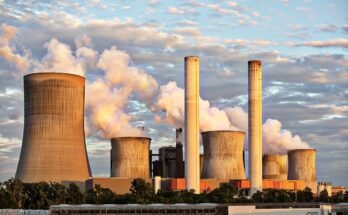Built Environment The Built Environment refers to the human-made surroundings in which people live, work, and interact. This includes, for example, what humans have built to fulfill the different facets of their lives: cities, towns, buildings, roads, bridges, parks, and other kinds of infrastructure. Such areas have a significant effect on how people engage with the natural world, resulting in bonds — or in some cases, breaks — among humans, their surroundings and the ecosystems surrounding them.
What is Included in the Built Environment?
The built environment can be almost anything, from the practical to the aesthetic, determining how we interact with our surroundings. We can decompose it into the following dimensions:
- Cities and Towns: Urban areas are arguably the most visible aspect of the built environment. These are often geared at supporting considerable populations, featuring tangled meshes of thoroughfares, living quarters, business quarters, and public amenities. These cities change over time, informed by cultural, economic, and technological progress.
- Buildings: Homes, offices, schools and factories are the fundamental units of the built environment. These structures provide refuge and places for socialization, recreation, work, and education, and have made a difference not only in the physical well-being of dwellers but also in their mental health.
- And Roads and Transportation Networks: Roads, highways, railways, and airports are paths for movement, enabling the movement of people and access to resources. They’re elements that guide how people interact with various locales, how commerce occurs, and how society correlates.
- Infrastructure — Utilities: Water systems, sewage systems, electricity grids, waste disposal. So, essentially infrastructure provides the services that supports us in daily life to allow our communities to function normally.
- Public Spaces and Green Areas: Parks, gardens, plazas, and recreational spaces are all part of the built environment. Such areas not only beautify our environments, but also allow for forms of recreation, relaxation, and a connection to the natural world.
How the Built Environment Good or Bad — Influences Human Contact with the Natural World
How the built environment influences the relationship a person has with the natural world. The spaces we make shape the urban-nature relationship for better or for worse. Here are some of these effects:
- Nature Connection: Good built environments can create true nature connection spaces. Urban parks and green roofs, like these in New York, integrate nature into cities and allow residents to interact with the natural world in a more organized manner while still having access to it. Incorporating natural elements into your architectural design—adding plant life in urban environments, for instance—could pay you dividends in mental and physical health. Individuals who reside in settings that include natural elements tend to have higher well-being, lower stress levels, and greater potential for physical activity.
- Urbanization and Strain on Nature: Conversely, the sprawling growth of urban areas leads to the decimation of green spaces. As cities expand and sprawl, forests, wetlands, and fields can give way to buildings and roads, resulting in environmental damage. The alarming contribute of loss in green spaces, biodiversity can have adverse effects for both, worlds of nature and human health. Urban heat islands, for instance, occur when concrete and asphalt replace natural vegetation, resulting in increased temperatures and inordinate energy use.
- Sustainability and Environmental Footprint Sourcing of Goods: Sustainability is another factor impacted by the design and construction of the built environment. These include the properties used in buildings, the patterns of energy-use, and waste disposal which all affect the environment. Modern sustainable design practices aim to minimize these impacts by using sustainable materials, energy-efficient technologies, and sustainable urban development strategies. Green architecture and smart city initiatives illustrate our rethinking of human-made structures and their coexistence with the environment.
- Nature Use: In some places, the built environment uses the most cost-effective design features to utilize natural resources (natural light, wind, and water) and can be reused or reclaimed. In contrast, ill-planned environments may restrict access to these resources or worsen issues like water scarcity and air pollution. Urban development must prioritize access to clean water, renewable energy, and safe, natural environments for sustainable living for the coming generations.
- Climate Change and Resilience: The built environment is becoming more and more focused on climate change, where tons of resilience is built into structures. In flood- or wildfire-prone areas and other climate at-risk zones, cities are adopting measures like raising buildings, adding drainage, and choosing fire-resistant materials. Such initiatives are designed to minimize risks to different communities due to the changing weather and protect them from natural disasters.
Technology shaping the built environment
Technology has played an ever-expanding role in the built environment, from construction methods to our movement through cities. Data and IoT (Internet of Things)-driven smart cities are being developed to create more efficient, livable, and sustainable urban environments. These cities are able to improve traffic flow, reduce energy consumption, monitor air quality, etc. Community solutions Innovations such as autonomous vehicles, green energy solutions and sustainable construction practices are changing the way we view human settlements.
Related: The Future of the Built Environment
Building a more sustainable, resilient, joyous future shared by humanity will not happen by accident: it requires tools such as biophilic design and regenerative development, which consider not only the physical buildings we construct but the context and design process behind them. Sustainable development, integration of nature in urbanization, and construction of human-aligned habitats increasingly concern architects, urban planners, and policymakers.
Cities designed with circular economy principles, minimizing waste and maximizing reuse and recycling, may become more common in the future. Green building practices and energy-efficient homes, as well as urban forests, may become more common as society seeks to live in greater harmony with nature.
Conclusion
We can’t talk about the built environment simply as buildings that we erect—it reflects our values and priorities and our relationship with nature. The challenge going forward is of designing spaces that address human needs and aid a healthier planet. If we create the environments in which we live wisely and sustainably, while taking design risks, we can generate spaces that are both kind to nature and perform their intended functions. In the end, the built environment is a monument to the ways in which humanity has harnessed the world around it, for good or for ill, and our responsibility to make certain that the end result is consonant with the long-term well-being of planet Earth and all who dwell thereon.



